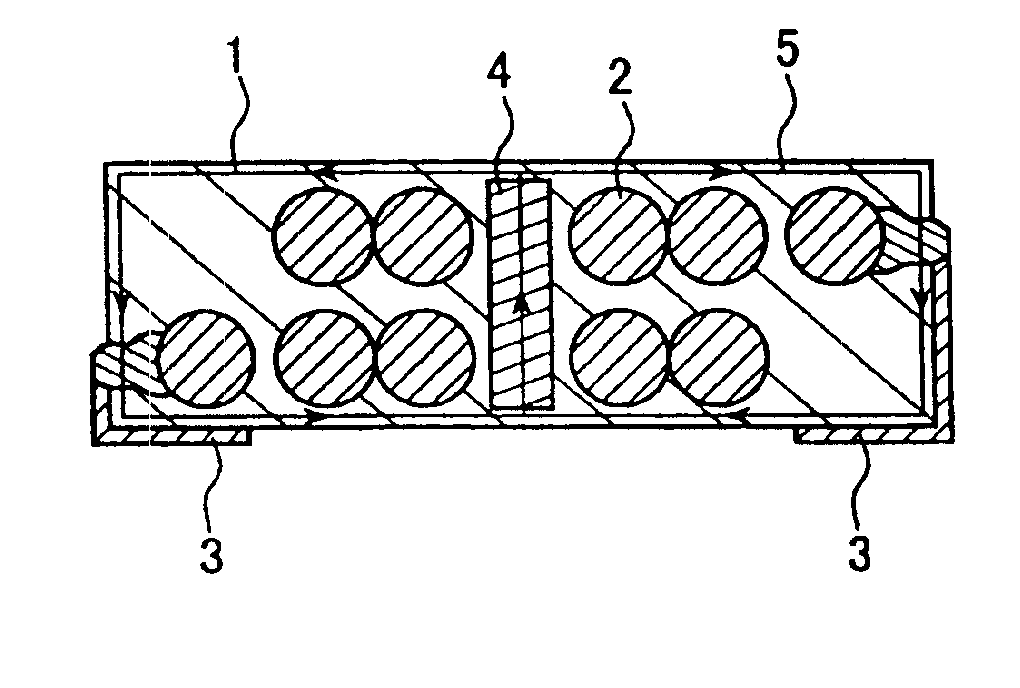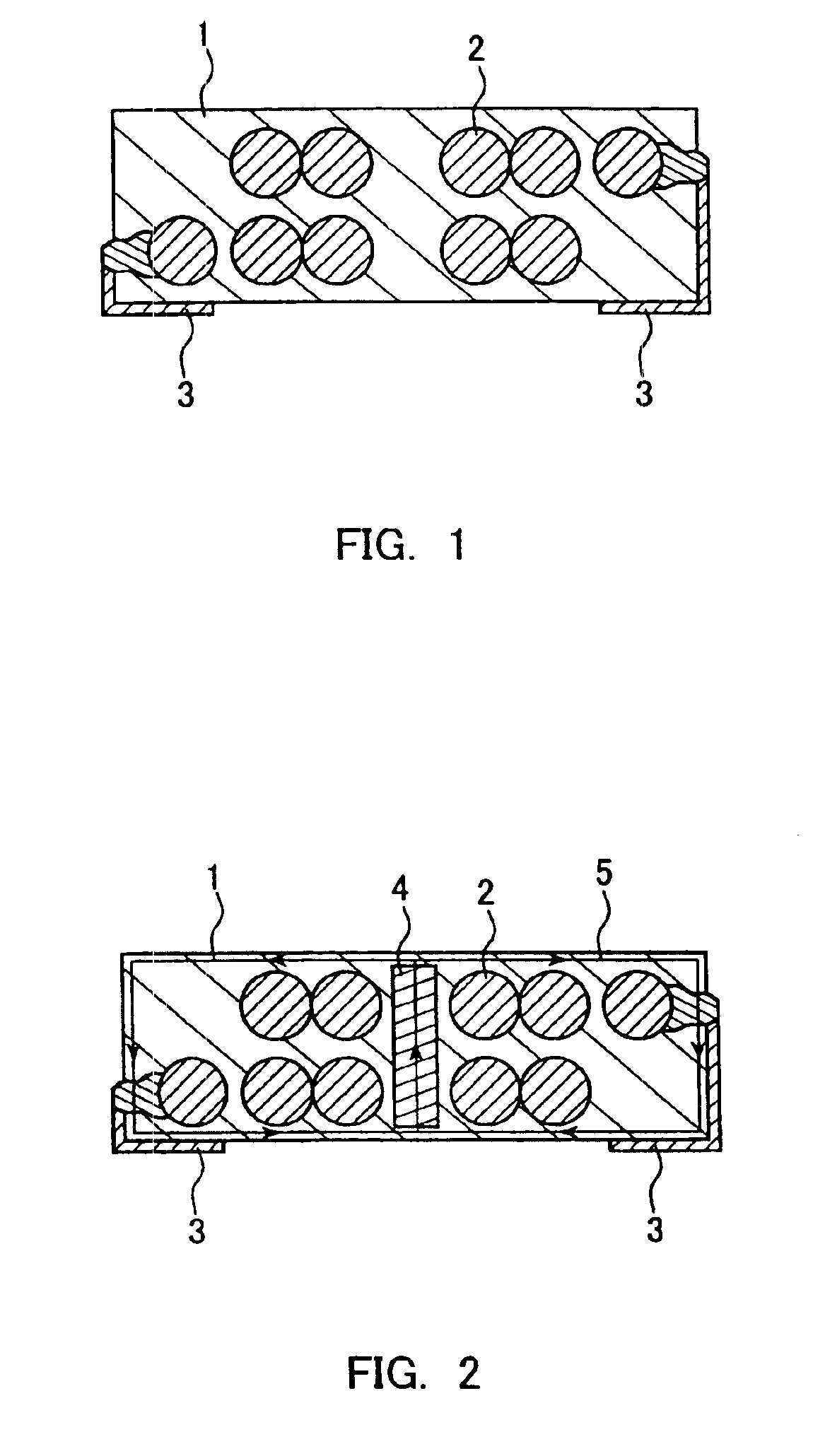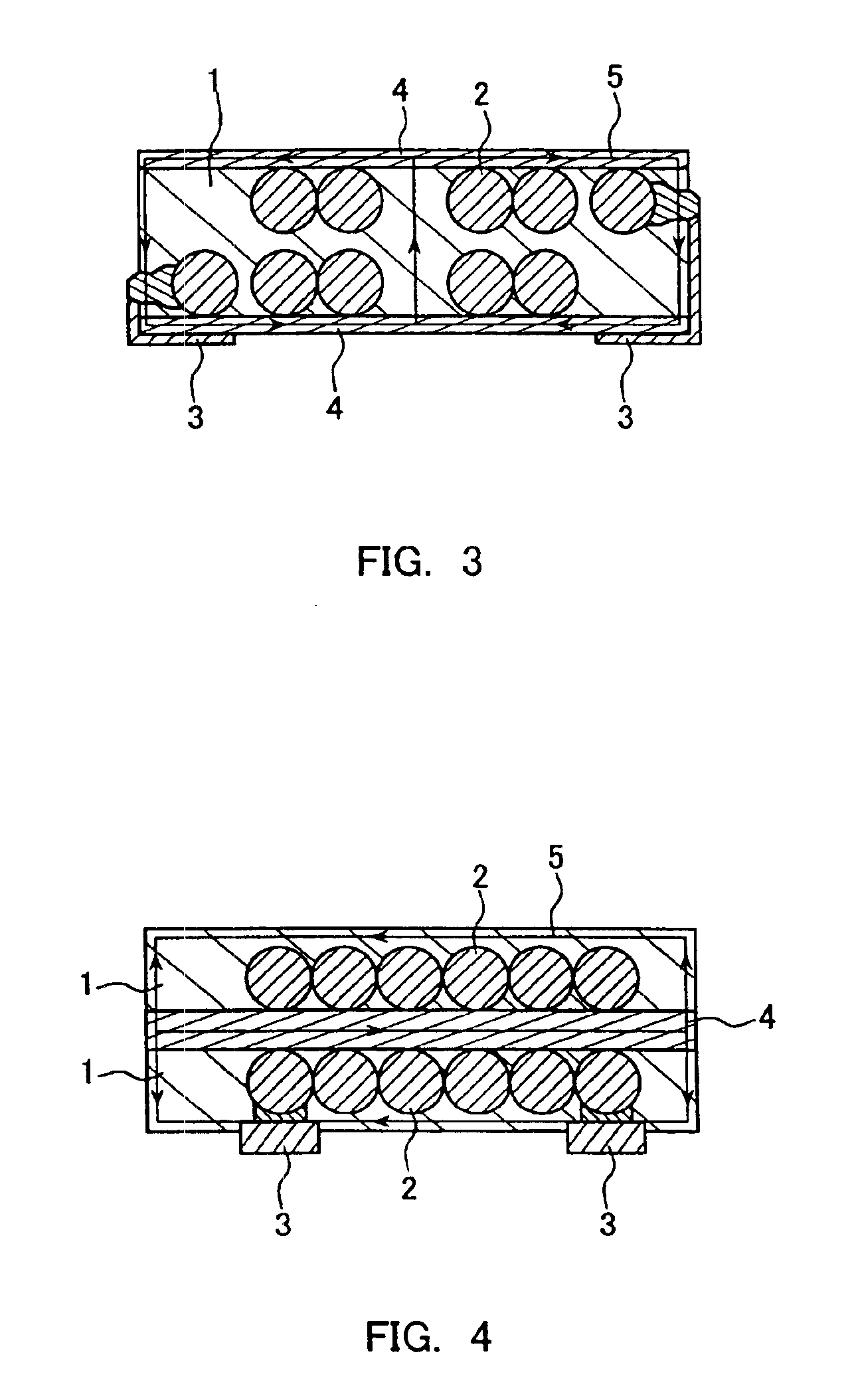Composite magnetic body, and magnetic element and method of manufacturing the same
a magnetic body and composite technology, applied in the field of composite magnetic bodies, can solve the problems of high magnetic loss, low electrical resistance, deterioration of dc bias characteristics,
- Summary
- Abstract
- Description
- Claims
- Application Information
AI Technical Summary
Benefits of technology
Problems solved by technology
Method used
Image
Examples
example 1
[0080]Initially, Fe-3.5% Si powder (Fe accounts for the rest as described above) with a mean particle size of about 15 μm was prepared as a metallic magnetic powder. This powder was heated in the air at 550° C. for 10 minutes and thus an oxide film was formed on the surfaces of particles of the powder. In this process, the weight was increased by 0.7 wt %. The composition of the surface of a particle of the powder thus obtained was analyzed along a depth direction from the surface using Ar sputtering by Auger electron spectroscopy. As a result, a portion in the vicinity of the surface was an oxide film containing Si and O as main components and Fe partially, and the concentrations of Si and O decreased gradually toward the center of the particle. Then, the concentration of O became constant to have a value in a range that can be regarded as substantially zero and the original alloy composition was found that contained Fe as a main component and Si as a subsidiary component. Thus, it...
example 2
[0086]Powders with the various compositions indicated in Table 2 with a mean particle size of 10 μm were prepared as a metallic magnetic powder. These powders were heat-treated in the air at temperatures indicated in Table 2 for 10 minutes. The temperatures allowing the weight of the powders to increase by about 1.0 wt % in the heat treatment were determined. Under such conditions, surface oxide films were formed. Epoxy resin was added to the powders thus obtained so that the epoxy resin accounted for 20 vol % of the whole amount, which then was mixed sufficiently. These were granulated by being passed through a mesh. Each of these granulated powders was molded in a mold at a predetermined molding pressure so that the final molded body had a packing ratio of the metallic magnetic powder of about 75%. Then, the molded body was taken out from the mold and then was heat-treated at 125° C. for one hour, so that the thermosetting resin was cured. Thus, a disc-shaped sample with a diamete...
example 3
[0090]In this example, Fe-1% Si powder with a mean particle size of 10 μm was prepared as a metallic magnetic powder. This powder was treated variously as indicated in Table 3. In other words, any one or combinations of two of the following pre-treatments were carried out: 1 wt % dimethylpolysiloxane, polytetrafluoroethylene, or water glass (sodium silicate) was added, which then was mixed sufficiently and was dried at 100° C., or oxidation was carried out to obtain weight increase by 1 wt % through heating in the air at 450° C. for 10 minutes. Next, epoxy resin was added to the pre-treated powder so that a volume ratio of the metallic magnetic powder to the resin of 85:15 was obtained, which then was mixed sufficiently. Afterward, the mixture was granulated by being passed through a mesh. With respect to these granulated powders, those pre-treated at 125° C. for 10 minutes and those without being pre-treated were prepared. Each of them was molded in a mold while pressure was varied...
PUM
| Property | Measurement | Unit |
|---|---|---|
| electrical resistivity | aaaaa | aaaaa |
| thickness | aaaaa | aaaaa |
| thickness | aaaaa | aaaaa |
Abstract
Description
Claims
Application Information
 Login to View More
Login to View More - R&D
- Intellectual Property
- Life Sciences
- Materials
- Tech Scout
- Unparalleled Data Quality
- Higher Quality Content
- 60% Fewer Hallucinations
Browse by: Latest US Patents, China's latest patents, Technical Efficacy Thesaurus, Application Domain, Technology Topic, Popular Technical Reports.
© 2025 PatSnap. All rights reserved.Legal|Privacy policy|Modern Slavery Act Transparency Statement|Sitemap|About US| Contact US: help@patsnap.com



